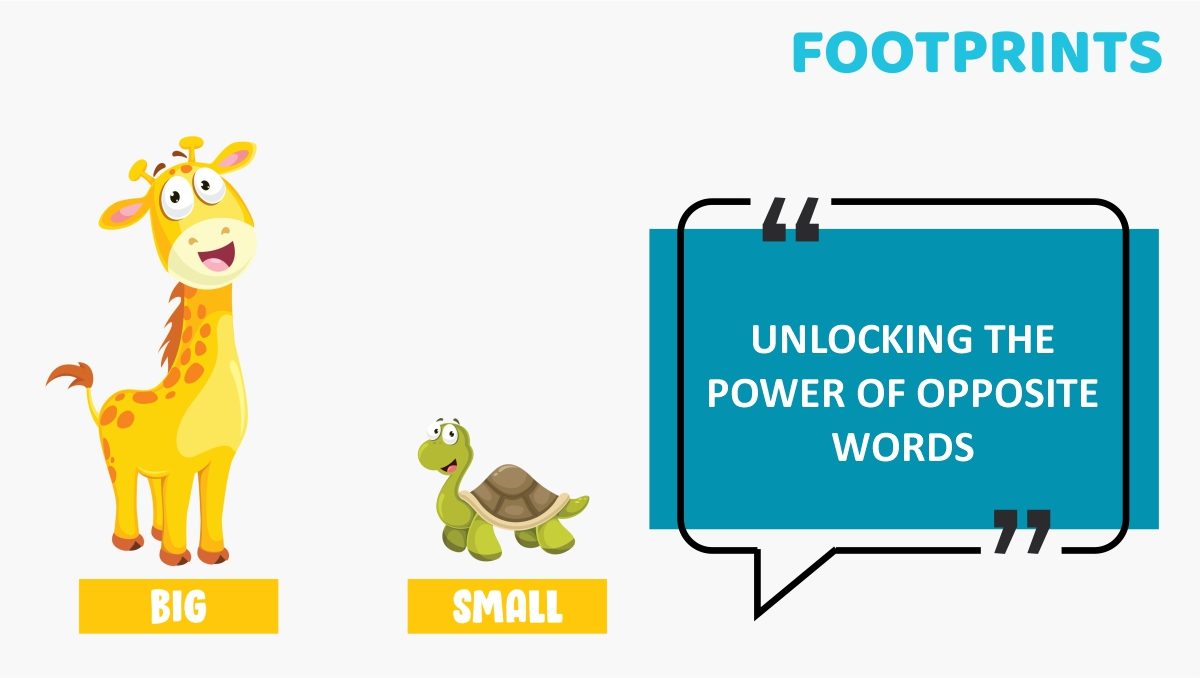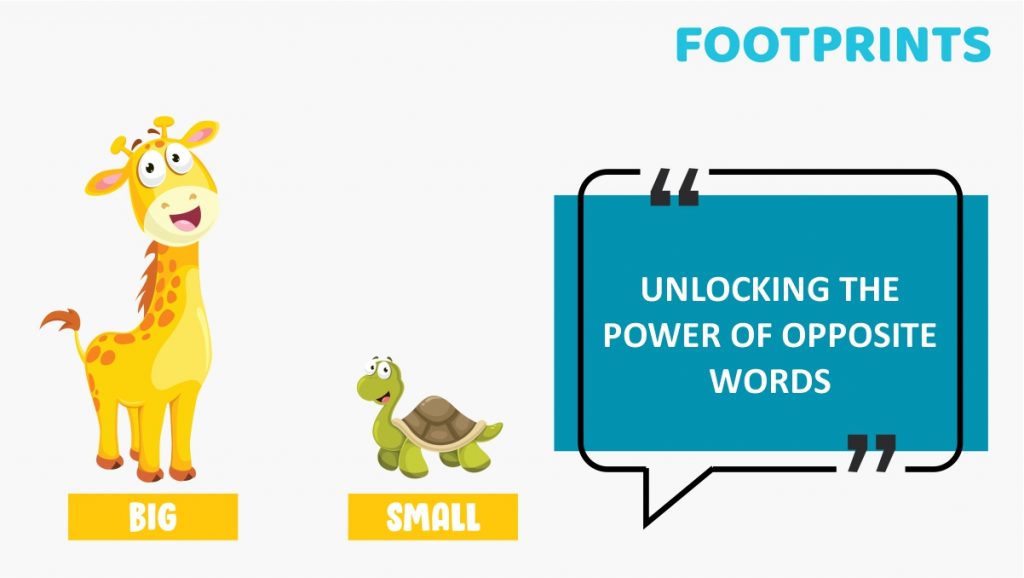

Language development is crucial to a child’s growth, especially during preschool. Parents and educators always look for innovative methods to enhance their learning experience. One effective way to boost their language skills is by introducing opposite words. Opposite words are also known as antonyms. It expands their vocabulary and provides a foundation for understanding concepts like size, quantity, and direction. This blog post will explore the power of opposite words in preschoolers’ language development. We will delve into effective strategies for teaching opposite words, explore common opposite words in English for children in kindergarten, and provide examples to reinforce their understanding. By unlocking the power of antonyms, we can help our little ones develop a strong linguistic foundation that will benefit them throughout their academic journey. Join us as we embark on this exciting journey of language exploration and witness the magic of opposite words unfold before our eyes!
The Importance of Opposite Words in Preschool Language Development
Opposite words play a vital role in preschool language development for several reasons. First and foremost, they help children understand the concept of duality and contrast. By learning antonyms, preschoolers recognize that words can have different meanings and represent contrasting ideas. This understanding lays the foundation for more advanced language skills, such as comprehension and critical thinking. Moreover, antonyms help children expand their vocabulary by introducing them to words with contrasting meanings. This enhances their communication skills and enables them to express themselves more effectively.
Effective Strategies for Teaching to Preschoolers
Teaching antonyms to preschoolers requires a well-planned and engaging approach. One effective strategy is to use visual aids, such as flashcards or picture books, to introduce opposite word pairs. Children can quickly grasp the concept of opposites by associating words with corresponding images. Another strategy is to incorporate hands-on activities that encourage active participation and interaction. For example, you can organize a scavenger hunt where children must find objects that represent opposite concepts, such as big and small or hot and cold. Furthermore, incorporating songs and rhymes emphasizing opposite words can make learning more enjoyable and memorable for preschoolers.
Exploring Opposite Words: Common Examples for Children in Kindergarten
To effectively teach opposite words to preschoolers, it is essential to provide them with a variety of examples that they can relate to. Children are typically introduced to basic opposite words in kindergarten, such as big and small, tall, and short, or fast and slow. These words help children understand contrasting concepts related to size, speed, and height. By incorporating these examples into everyday activities, like comparing the size of objects or discussing the speed of different animals, preschoolers can develop a deeper understanding of antonyms and their meanings.
Certainly! Here’s a list of 50+ common opposite words in English that can be fun and educational for preschoolers:
| Big | Small |
| Hot | Cold |
| Fast | Slow |
| Happy | Sad |
| Up | Down |
| In | Out |
| Open | Close |
| Day | Night |
| Light | Dark |
| High | Low |
| Full | Empty |
| Wet | Dry |
| Near | Far |
| Young | Old |
| Clean | Dirty |
| Long | Short |
| Left | Right |
| Front | Back |
| Loud | Quiet |
| Above | Below |
| First | Last |
| Inside | Outside |
| Hard | Soft |
| Same | Different |
| Thin | Thick |
| Sweet | Sour |
| Rough | Smooth |
| Weak | Strong |
| North | South |
| Bright | Dull |
| Early | Late |
| Friend | Enemy |
| Brave | Cowardly |
| Shallow | Deep |
| Simple | Complicated |
| Upstairs | Downstairs |
| Wide | Narrow |
| Wild | Tame |
| Smile | Frown |
| Together | Apart |
| Join | Separate |
| Win | Lose |
| Push | Pull |
| Begin | End |
| Go | Stop |
| Healthy | Sick |
| Love | Fear |
| Noisy | Hushed |
| Import | Export |
| Present | Absent |
| Start | Finish |
| Give | Take |
| Add | Subtract |
| Positive | Negative |
| Upward | Downward |
| Buy | Sell |
| Build | Destroy |
Conceptual Understanding: Size, Quantity, and Direction
Opposite words apply to simple concepts like size or speed and extend to abstract concepts like quantity and direction. Teaching preschoolers opposite words related to these concepts, such as ‘more and less’ or ‘left and right,’ helps them develop a deeper understanding of the world around them. For instance, by learning antonyms related to quantity, children can better grasp the concepts of addition and subtraction. Similarly, understanding opposite words related to direction enables children to navigate their surroundings and communicate spatial concepts effectively.
Fun Games and Activities for Preschoolers
Engaging preschoolers in fun and interactive games and activities is essential to reinforce the learning of antonyms. One such activity is the ‘Opposites Memory Game,’ where children match opposite word pairs on cards. This game enhances their memory skills and reinforces their understanding of antonyms. Another enjoyable activity is ‘Opposite Charades,’ where children act out opposite actions or use body language to convey opposite concepts. These games and activities make learning antonyms enjoyable and provide opportunities for social interaction and teamwork.
Conclusion
Unlocking the power of opposite words is crucial to preschool language development. By incorporating effective teaching strategies, providing relatable examples, and engaging preschoolers in interactive activities, educators can help children build a strong foundation in language skills. The benefits of developing a robust understanding of opposite words extend far beyond the preschool years, offering lifelong advantages in communication, comprehension, and critical thinking. As educators, parents, and caregivers, we are responsible for nurturing and encouraging this essential aspect of early childhood education, unlocking the full potential of preschoolers’ language development.

Amita is an experienced educator with over 30 years of experience. She has an outstanding understanding of child development, having worked with various age groups for prestigious businesses. She has been dedicated to handling Footprints’s Curriculum and Delivery department for the past decade. Amita’s credentials include being one of India’s few HighScope Curriculum certified trainers and volunteering as a course leader for Landmark Education, the world’s largest training firm.

